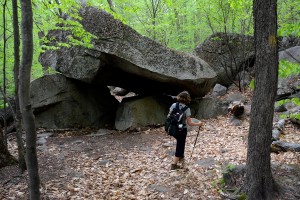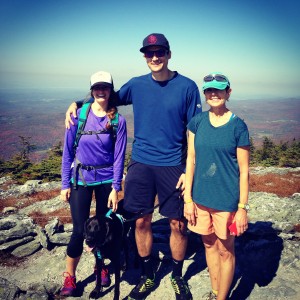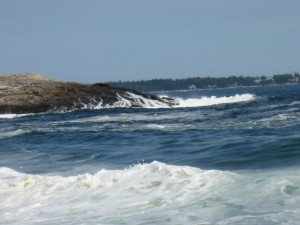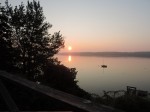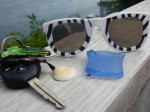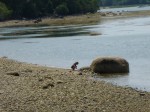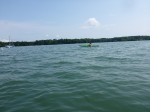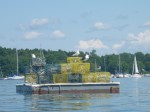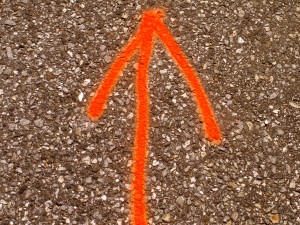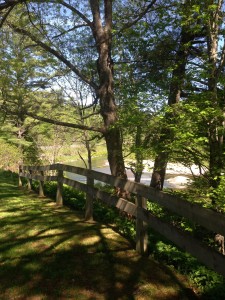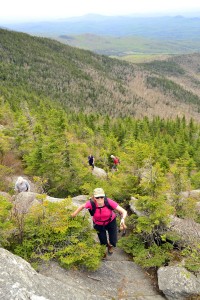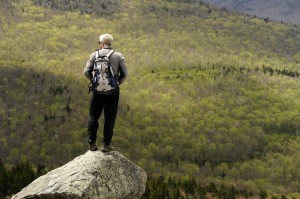Temperatures are dropping, the white stuff is in the forecast and restlessness tugs against the temptation to grab a good book and settle in by the fire. With a few exceptions, most bikes, boats and summer gear are packed away for next year.
Then the email rolls into my inbox. “Hey, who wants to do some winter hiking?” What on earth does that mean?
It appears that there are two kinds of winter hiking. One involves multi-day excursions that are borderline tests of survival skills while the other is simply doing what you do in the summer but adapting to winter terrain and conditions. Let’s look at the latter.
To get outdoors to hike in the winter requires the same steps as doing so at any other time during the years, just more of them.
Establish a destination. Roaming randomly is not a good plan, especially when weather conditions are sometimes dangerously variable. Hike with others and be sure that friends or family members know that you are headed out, where and for how long.
Gear is important. Hiking poles are especially helpful in the winter. Layers of warm and warmer clothing, a shell that is wind and rain resistant, gloves, hat, good socks and footwear, and later a buff and maybe some handwarmers.
You will want to regulate your body temperature by shedding or adding layers as you go. While you’re at it, stuff a few dry items into your pack such as extra socks and gloves.
Also in that pack be sure to have a healthy supply of fuel. The usual fluids and snacks are good, but extras as well as a thermos or two of something hot are even better. Don’t forget that water in the hose of a hydration pack can freeze; so can solid foods. Because you will be gradually extending your winter hiking expeditions, you will learn what works and what doesn’t as you lengthen distance and increase hours on the trail.
HIKING FITNESS
Perhaps the best plan is to consider winter hiking as a continuum. Just as one season segues into another gradually (usually), adapting to the challenges of the outdoors should happen over time. Shocking the system with too much, too soon is endangering to health and safety as well as a sure-fire way to blight budding enthusiasm.
Hiking is an excellent way to increase and/or maintain fitness. Repetitive walking and climbing movements build muscular strength, while practice on diverse surfaces improves balance and coordination. The heart, lungs and skin adapt to the cold as a sense of well-being gains traction.
When you’re not on the road or the trail, spend some time training core strength and stability to help you deal with the additional weight of a pack as well as unexpected missteps and off-balance maneuvers along the way.
Flexibility exercises help to maintain joint integrity while preventing inappropriate muscle tightness that could lead to injury. Lower body strength needs are obvious, but it’s not all about the quadriceps. Be sure to balance all muscle groups by addressing the lower leg as well as the upper, back and front, inside and outside. And, of course, upper body strength is important for pushing and pulling, reaching, clasping and utilizing poles effectively.
Search engine results for “hiking fitness” are plentiful. A better approach might be to visit a fitness professional to design a program appropriate to you and your individual needs and goals. Beware of any training plan that is promoted as one-size-fits-all.
Remember, a hike is not a one-time deal. Begin with shorter, easier routes and gradually intensify the effort by finding longer and more difficult trails.
A hike is a hike. A simple winter’s walk on a class 4 road could well be the hike for you. More likely, however, trails will beckon and you will be drawn to greater adventures. As you build endurance and capability, and as hiking regularly becomes habitual for you and your companions, you will want to enlarge the boundaries of your initial outings.
WINTER WHITE
Snow is beautiful. It is also wet, cold, slippery and often unexpected. It can hide pitfalls or make them more navigable. Snow can cause or cushion falls, make you work harder going up or easier sliding down. It can blanket you in insulation or chill you to the bone. It can surprise you with dehydration and fiercely bounce the sun’s rays back to your eyes and skin. Bottom line – prepare and prevent snow hazards.
Watch the weather forecast. Wear appropriate boots, gaiters, and waterproof outerwear. Carry snowshoes for deeper amounts or shoe grips such as stabilicers or yaktrax for slick. Hydrate purposefully and apply sunscreen liberally.
Maneuvering through snow demands additional energy and effort. Beware to assess your ability realistically and heed signs of onset of fatigue. It is always better to turn around early than to get stuck far from your base, miserable and potentially at risk.
Even on shorter hikes of only a few hours, it is wise to be prepared packing with you a flashlight, first aid kit, waterproof matches and an emergency blanket. If your cell phone works, great. Don’t rely on it.
Fortunately there are ample resources for hiking in Vermont. For example, go to http://www.greenmountainclub.org/ to find hiking advice and destinations. Note that on the Long Trail, trail blazes are white and might be hidden beneath deep snow or difficult to see.
Winter is not a good time to get lost. Heed advice to carry a map (many are available at GMC) and a compass, and be sure you know how to read them.
By the way, when you visit the Green Mountain Club online, by phone or in person, be sure to learn more about what they do and what they offer that might appeal to you. There are group hikes appropriate for all levels, workshops, lectures and events. Granted, much of what you may learn is common sense, but even the brightest among us needs to have rational information organized and presented as functional and accessible.
MENTAL AND EMOTIONAL FITNESS
Vermont offers unlimited opportunities to explore the outdoors all year. Because of changing seasons, there’s always something new to see, even along the same path. Summer’s lush, green foliage gives way to an often drab stick season. While it is prudent to stay off trails during mud seasons, and be careful in the woods during hunting seasons, dirt roads and recreational paths offer unrestricted venues to keep the legs moving.
A hiker is often surprised to find distant views through bare branches. A narrow trail opens to expansive vistas that carry thoughts along with it. Changing light and shadows, snow cover, frozen brooks, sunrise, dusk, all take on new meaning.
Research proves that physical activity is a healthy antidote and potential cure for sadness, discouragement and even clinical depression. To work it’s magic, exercise must be performed regularly. Add to regular practice stellar scenery and good friends and you have a solid reason to get out and hike. Even in the winter. Especially in the winter.




